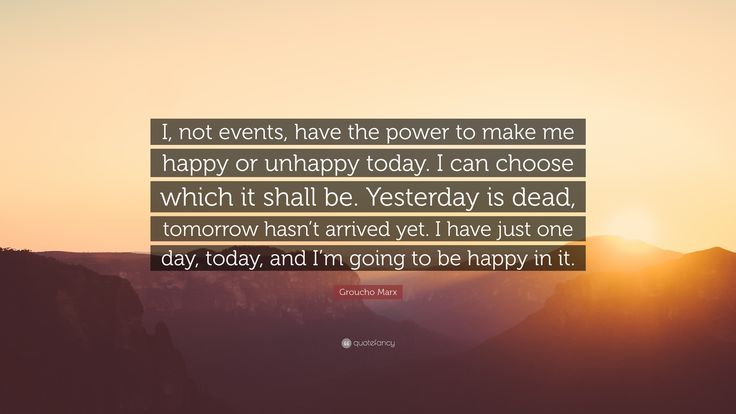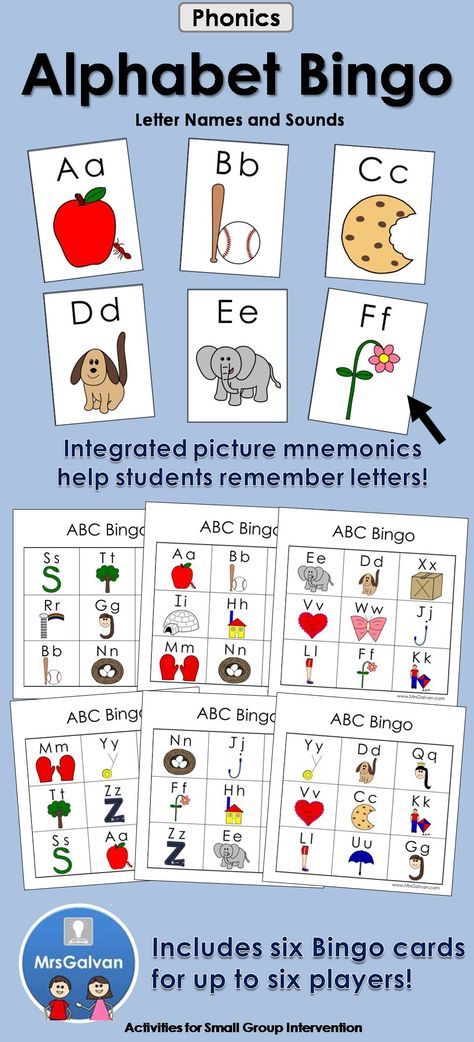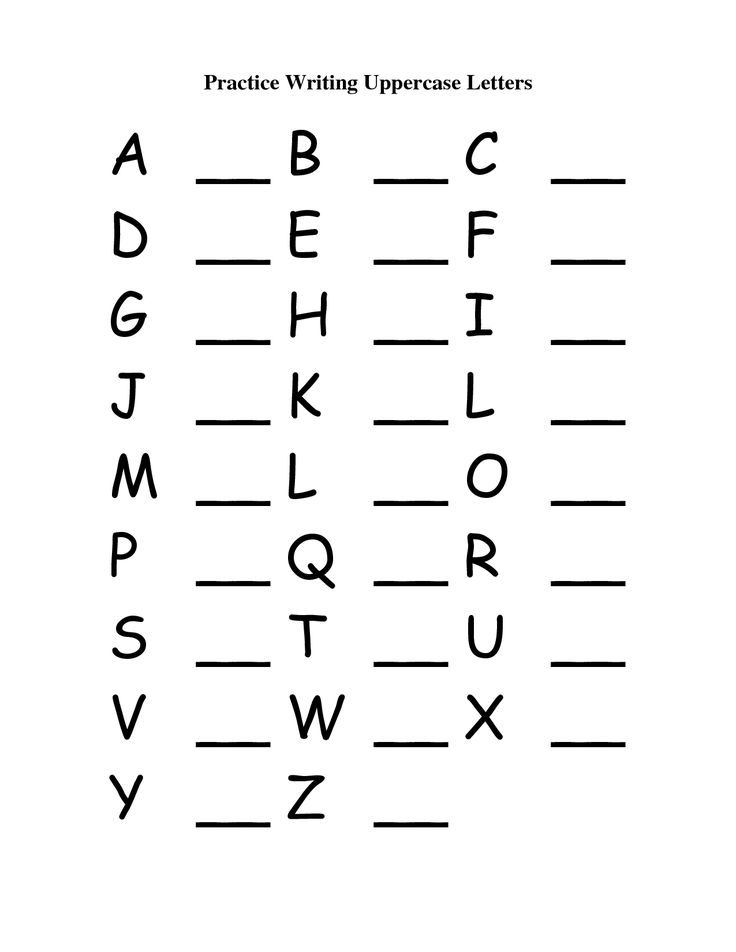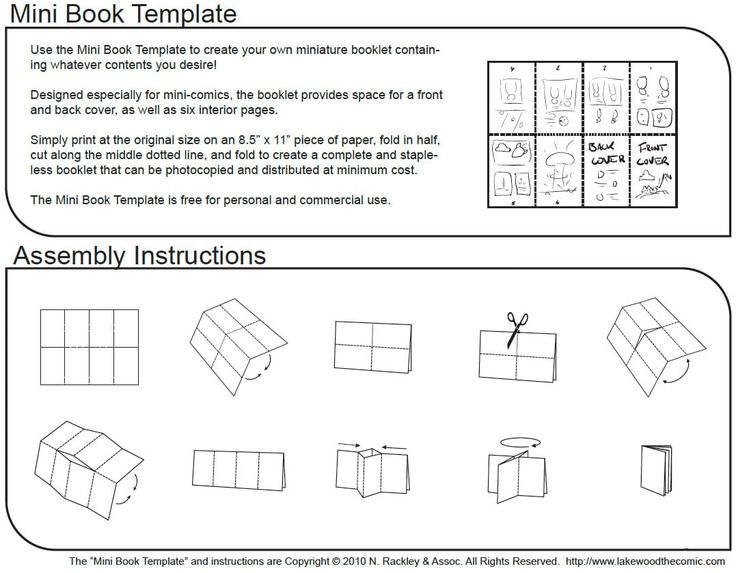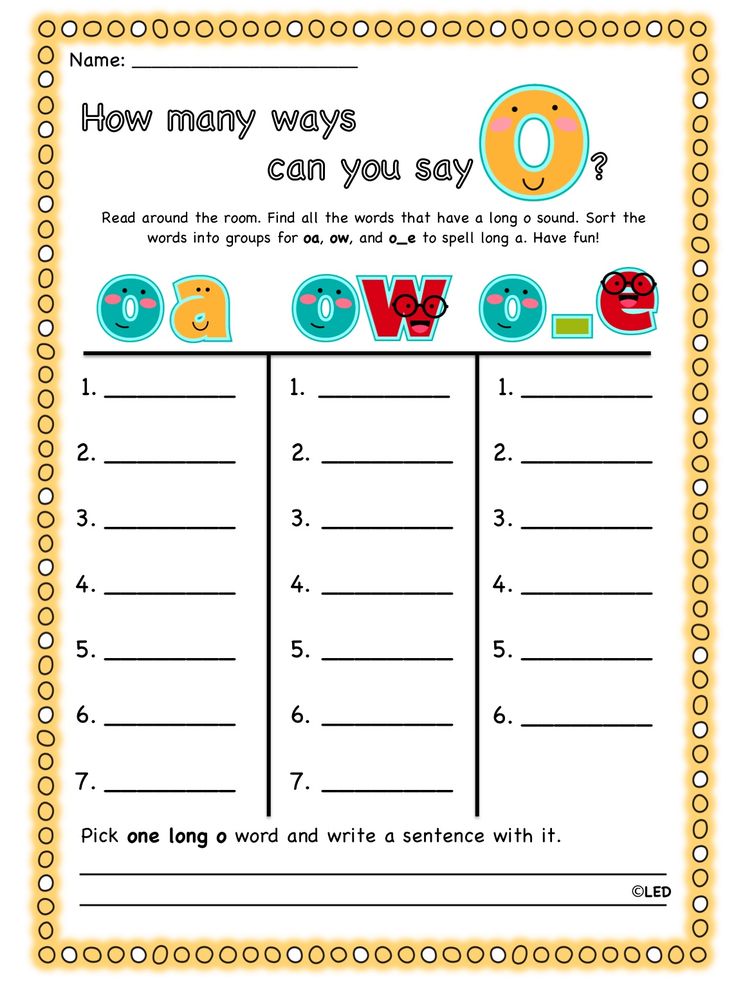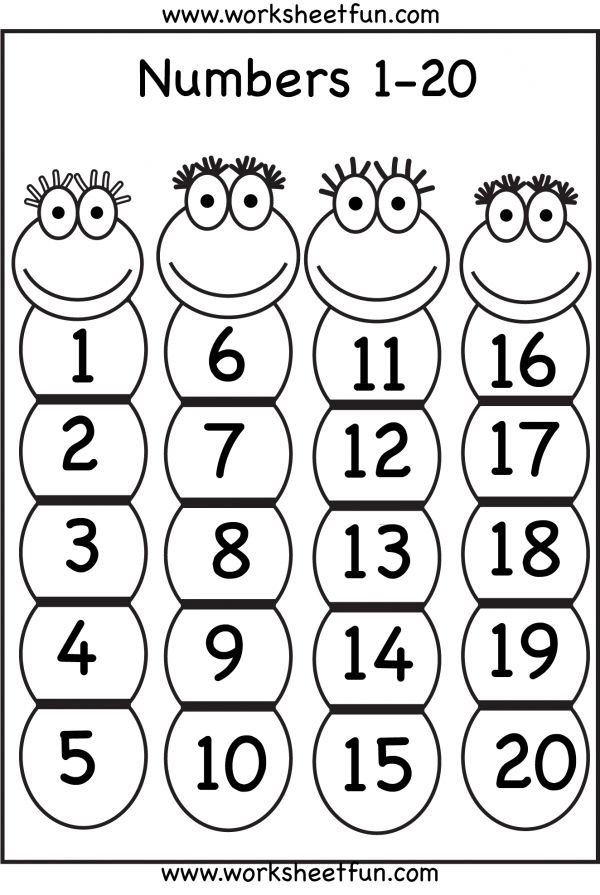How to keep your desk clean
The Simple Guide to a Clutter-Free Desk
A businessman from the Philippines once gave me priceless advice. He said, “Clear off your office desk every night before you leave. You’ll be thankful in the morning.” Since then, I have tried to do that very thing every evening before I leave. And I have seen numerous benefits from maintaining a clutterfree desk:
- Less Distraction. A cluttered office desk is filled with potential distractions. Sticky-notes, business cards, file folders, and uncompleted projects all clamor for our attention every moment of the day. Removing them and creating a minimalist desk allows our mind to better focus on the most important project of the moment: the one you are working on.
- More Freedom.
A minimalist desk grants freedom to pursue the project of your choosing. Your to-do list is not held captive by the folders on your desk. It is determined by you – even if you are getting direction from someone else.
- New Opportunity. A new day brings new opportunities and the potential to accomplish something great. Walking into an office with yesterday’s work still visible immediately anchors you to the past, tying yesterday’s rope to today’s potential. But a clean desk breeds life, encouragement, and endless possibilities. Even if your new day is going to consist of completing yesterday’s project, starting again or reopening the file offers new opportunities and a new way to see a problem or accomplish a task.
- Increased Reputation. A clean desk indicates a clean and focused mind. It makes you look efficient, accomplished, thorough, and organized. And while nothing can replace a job well done, a clear desk can only help improve your reputation among your co-workers.
Granted, a minimalist desk comes more naturally to some than others. But I stand as proof that the principle of a clean desk can be applied to any worker’s personality. Here are six steps that I have found particularly helpful in making the transition:
- Reduce your Office Items.
 The first step in keeping your desk minimalistic is keeping fewer things on it and around it. Seems simple enough… almost so simple that it often gets overlooked. Take a look around your desk surface. What doesn’t absolutely need to be there? Photos, calendars, books, supplies, and food should all be considered. If it’s not essential, remove it permanently.
The first step in keeping your desk minimalistic is keeping fewer things on it and around it. Seems simple enough… almost so simple that it often gets overlooked. Take a look around your desk surface. What doesn’t absolutely need to be there? Photos, calendars, books, supplies, and food should all be considered. If it’s not essential, remove it permanently. - Use Drawers. Using drawers isn’t cheating, it’s smart. It keeps your projects, tools, and supplies at your fingertips while still removing them from your line of sight. In my drawers, I store all of my supplies (pens, stapler, etc.) and my current projects. My current projects are stored in labeled folders in my top drawer for easy access. And only the current project that I’m working on gets to be on my actual desk surface.
- Finish Your Projects. One of the biggest enemies of desk clutter is unfinished projects. Sometimes, they lay on our desks for weeks distracting us and taunting us.
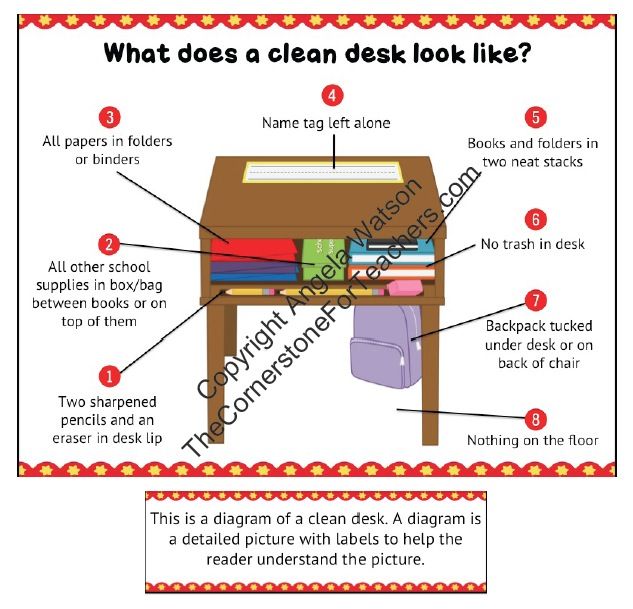 The mind clutter of an unfinished project can be crippling at times. If the project can be completed in less than 20 minutes, see it through to completion right away. If the project will take longer, find a drawer to store it in until you are ready to pull it out and work on it again.
The mind clutter of an unfinished project can be crippling at times. If the project can be completed in less than 20 minutes, see it through to completion right away. If the project will take longer, find a drawer to store it in until you are ready to pull it out and work on it again. - Store Things Digitally. A simple Contacts program and Tasks program can probably remove 95-100% of the notes cluttering your workspace (I have always used Microsoft Outlook). Find one and learn to use it. Those sticky-notes will no longer clutter your screen or distract your mind. And you’ll never lose one again either. I have found this method to be both liberating and essential.
- Limit Computer Distractions. While your computer can be essential in helping to eliminate the clutter from your desk, it can provide distraction of its own. Help your cause by decluttering your computer desktop along with your physical desk. For starters, find a non-distracting wallpaper image and remove all unnecessary icons.

- Set aside 5 minutes. Take the last 5 minutes of every day to clear the surface of your desk. Rest assured that once you get started with the habit, it’ll take far less than 5 minutes. But set that much aside at the beginning. Trust me, your morning you will thank you.
A clear and minimalist office desk will grant you more focus, peace of mind, and productivity. And that’s good for both you and your company.
Keep Your Desk Tidy With 8 Easy and Inexpensive Tips
"What do you need to get work done?" Ask that question of any highly organized person, and they'll invariably say, "I need a tidy space." Keeping a neat and clean physical workspace is important to helping us focus and work productively. Our environment influences our behavior, mood, and state of mind. Research shows that being in a good mood(Opens in a new window) boosts our ability to complete tasks with greater accuracy and not to give up on difficult tasks too quickly. So, if you want to feel ready to tackle the day, start with a neat desk.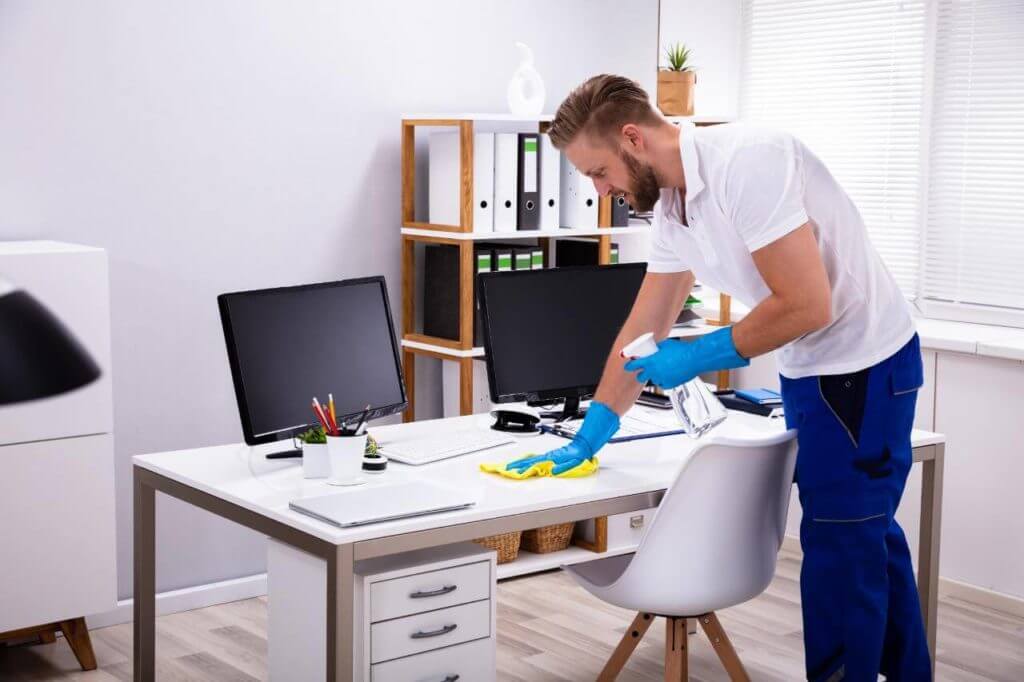
If you aren't organized by nature, it can be really hard to keep a neat desk, especially if you work from home—or study at home—and don't have much separation between your time off and your productive time. The good news is that it doesn't take much in terms of money or effort to tidy up your workspace. Most of the suggestions below are either low-cost or free if you have a few items to reuse or upcycle. You don't have to spend money on fancy organizers or a new desk. If you have a shoebox that's in fair shape and other household items, you can make your desk a little bit tidier. Anything you might need to buy can be easily found online, at an office supply store, or at a hardware store for a couple of bucks.
1. Digitize Ruthlessly
The number one way to keep a desk clean and clear is to prevent clutter from piling up in the first place. So what piles up on your desk or table? For many people, it's paper. Going paperless isn't as tough as it sounds. When you get a piece of paper, scan it, and make a digital copy immediately—or at least within a week of receiving it—and then file, shred, or recycle it.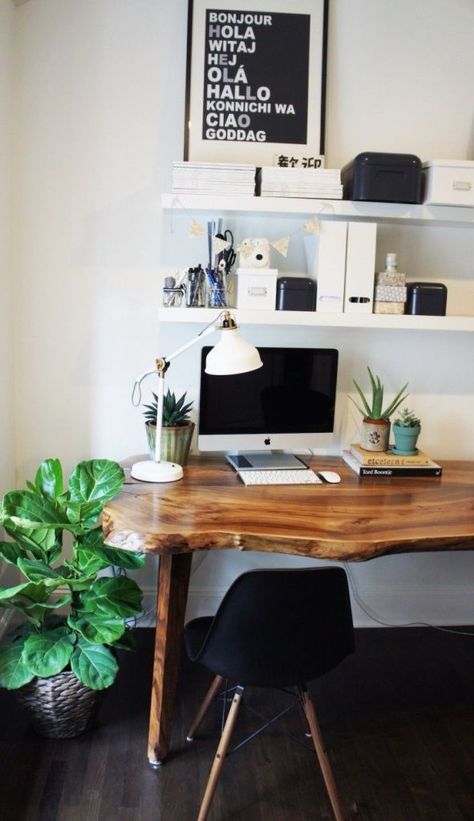 A few of the best mobile scanning apps are free, so you can turn paper into digital documents with your phone.
A few of the best mobile scanning apps are free, so you can turn paper into digital documents with your phone.
Organizing the scanned documents is another process. An easy way to start is to put newly scanned items into a folder either labeled "Inbox" or by date, such as "Year" or "YearMonth." For example, 202204 corresponds to April 2022. If you put scanned documents into an Inbox folder, the idea is you'll deal with them another day. If you put them into a folder labeled with a date, the idea is you'll be able to look for documents that you need based on when you received them or when they were roughly relevant.
2. Use Velcro to Mount Items Not in Use
We picked up this tip from prototype designer Zack Freedman(Opens in a new window): He put one piece of a strip of Velcro on the back of his Bluetooth keyboard and the other strip on the side of his desk. That way, when he needs to use his soldering iron, the electronics are neatly out of the way. Even if you aren't melting metal, you can still use this trick for a keyboard and other small items.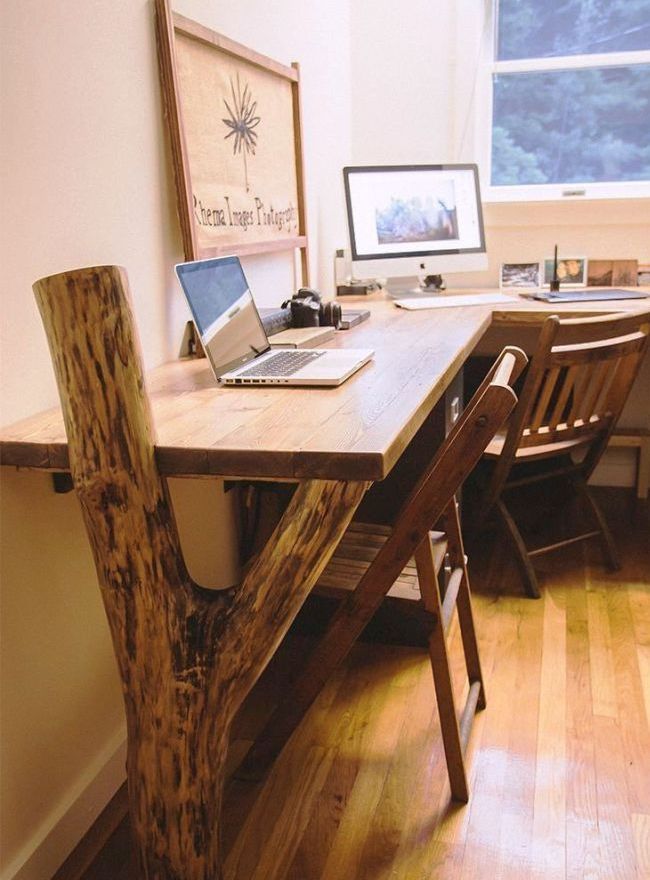 Be sure to put the soft side of the Velcro on the device or item so that it doesn't scratch up your desk when it's attached. And don't use this trick on varnished desks, as it could ruin the finish.
Be sure to put the soft side of the Velcro on the device or item so that it doesn't scratch up your desk when it's attached. And don't use this trick on varnished desks, as it could ruin the finish.
3. Keep a Microfiber Cloth on Hand (Preferably a Big One)
A microfiber cloth is a must-have item on any computer work desk. Use it to remove smudges from your monitor, webcam, phone, and glasses. At the end of the day, drape it over your keyboard or monitor to protect it from dust.
4. Bundle Wires and Cables With Velcro One-Wraps
Musicians, who know all too well the pain of keeping wires and cables organized, swear by Velcro One-Wraps(Opens in a new window). I do, too. These little multipurpose wonders cost a few dollars for a five-pack in various colors or all black. Use them to keep charging cables bundled neatly or to rein in excess cord length dangling behind your computer. You can buy extra-long cord wraps and secure wires to the leg of a desk to keep them from dangling.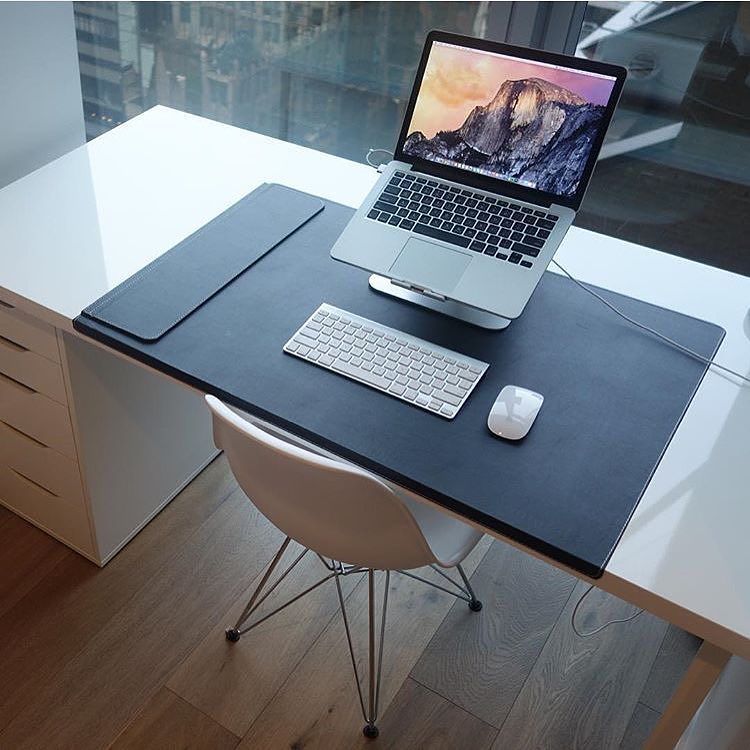 One-Wraps make your workspace tidy quickly. In a pinch, rubber bands can be a good substitute, although they degrade after about a year.
One-Wraps make your workspace tidy quickly. In a pinch, rubber bands can be a good substitute, although they degrade after about a year.
5. Upcycle Containers to Store Odds and Ends
You know those tins, decorative boxes, and packaging you keep because you think they’ll be useful someday? Today's the day. Upcycle boxes and containers to store odds and ends such as paper clips, charging cables, or whatever accumulates on your desk. Stackable containers make it even tidier. For larger items, try a shoebox or tissue box with the top cut off. Add a pop of color and design by covering your boxes in gift wrap or self-stick wallpaper.
Recommended by Our Editors
Purge Clutter From Your Digital Life in 5 Simple Steps
Clean Up Your Messy Cables With These 9 Simple Tips
How to Clean Your Computer Keyboard
6. Label Folders, Chargers, and Other Items
Organized people love label makers. When you label things around your desk, office, and home, it's easier to find what you need quickly, as well as to put it in its place. Label folders or sections of an accordion binder to keep all the papers you can't recycle or shred, such as birth certificates, titles, deeds, and wills. Label chargers, and never argue again about whose phone charger is the one with the frayed end. A good home-use label maker costs as much as you want to spend. For example, the Epson LabelWorks LW-PX300(Opens in a new window) (which got top marks in our testing) costs $89, but perfectly good models that are smaller or slightly older from companies such as HP and Dynamo cost about $25. You could also buy a sheet of adhesive labels (about $12 to $15 for 100 sheets) and run them through your printer or write on them by hand.
Label folders or sections of an accordion binder to keep all the papers you can't recycle or shred, such as birth certificates, titles, deeds, and wills. Label chargers, and never argue again about whose phone charger is the one with the frayed end. A good home-use label maker costs as much as you want to spend. For example, the Epson LabelWorks LW-PX300(Opens in a new window) (which got top marks in our testing) costs $89, but perfectly good models that are smaller or slightly older from companies such as HP and Dynamo cost about $25. You could also buy a sheet of adhesive labels (about $12 to $15 for 100 sheets) and run them through your printer or write on them by hand.
7. Hang or Guide Wires With Command Hooks
Wall hooks and coaxial cable clips keep cords organized by guiding them along baseboards, behind furniture, and up walls. They work wonders not only for desks but also for home entertainment systems. Command brand hooks are great because they have a sticky backing that peels off easily when you pull down on the tab to remove them.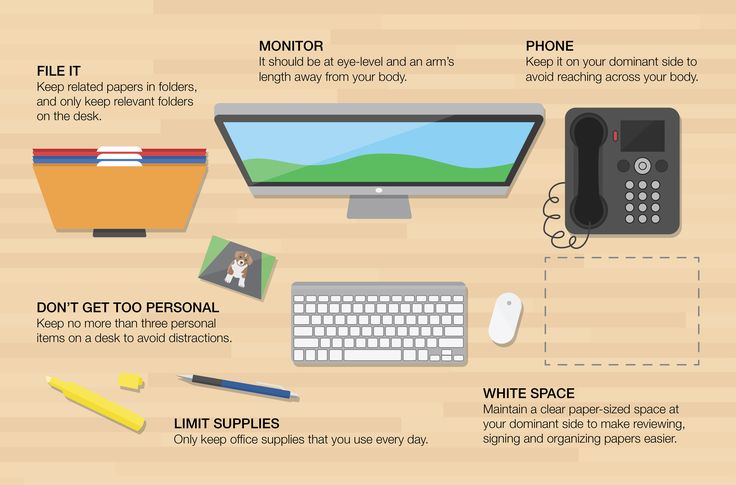 Coaxial cable clips work just as well, if not better, but you have to hammer into your walls and furniture to secure them.
Coaxial cable clips work just as well, if not better, but you have to hammer into your walls and furniture to secure them.
8. Use Drawers, Cabinets, and Bookshelves
It always surprises me when the top of someone's desk is a disaster, and yet they have an empty drawer inside that very same desk. People tend to leave stuff on their desks when they can't or don't want to throw it away, or when they are procrastinating dealing with it. If you want a neat desk, however, you have to find a place for miscellaneous items. And the best space could be right under your nose. If your desk has cabinets or drawers, are they full? Could you take everything from your desk, place it into shoeboxes or folders and slide it all into your desk drawers or cabinets? If you have a bookshelf nearby, it might have some free space, too. Make use of all the spaces you already have!
Like What You're Reading?
Sign up for Tips & Tricks newsletter for expert advice to get the most out of your technology.
This newsletter may contain advertising, deals, or affiliate links. Subscribing to a newsletter indicates your consent to our Terms of Use and Privacy Policy. You may unsubscribe from the newsletters at any time.
Thanks for signing up!
Your subscription has been confirmed. Keep an eye on your inbox!
Sign up for other newsletters
7 simple tips to keep your desktop in order - Blog
Blog 7 easy tips to keep your desk organized 2017-12-18
Looking at your desk littered with papers, you must have remembered the phrase that is (erroneously) attributed to Einstein: "If a mess on the desk means a mess in the head, then what does an empty desk mean?" And they calmed down, because disorder is a sign of a creative person. Or lack of time and desire to sort out this rubbish? We explain why it is necessary to keep the workplace in order, and advise how to organize everything correctly.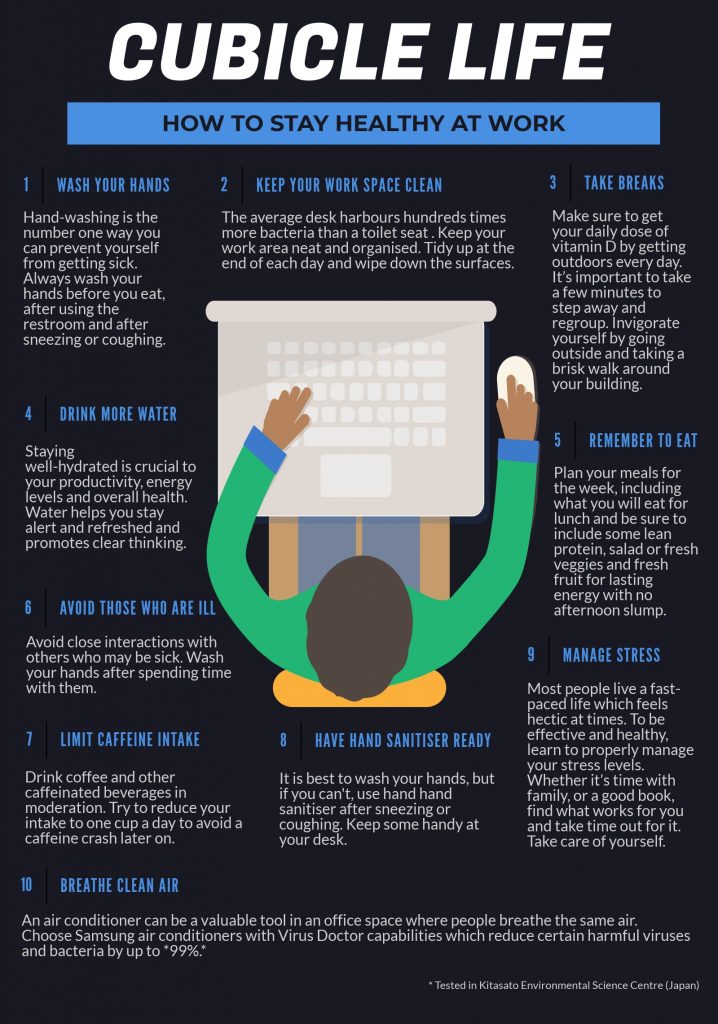
Order on the desktop does not mean sterile cleanliness. Rather, it is a well-thought-out workplace organization system that allows you not to waste time searching for papers and sorting out office blockages.
If clutter does not prevent you from quickly navigating through documents and files, then leave everything as it is. Provided that the employer does not object. Or try our tidying up life hacks and compare after a couple of weeks if it's better. Just for experimental purposes.
Pluses of order
Starting the working day “from a clean desk”, you can focus on important projects without being distracted by unnecessary trifles and old papers. Order inspires productive work and increases concentration. Also, you will not need to frantically clean up before inviting a colleague to a meeting. Earn a reputation as a neat and organized person with your superiors as a bonus. In the end, it’s nice to work at a clean desk yourself.
Order minuses
Of course, there are downsides to the order.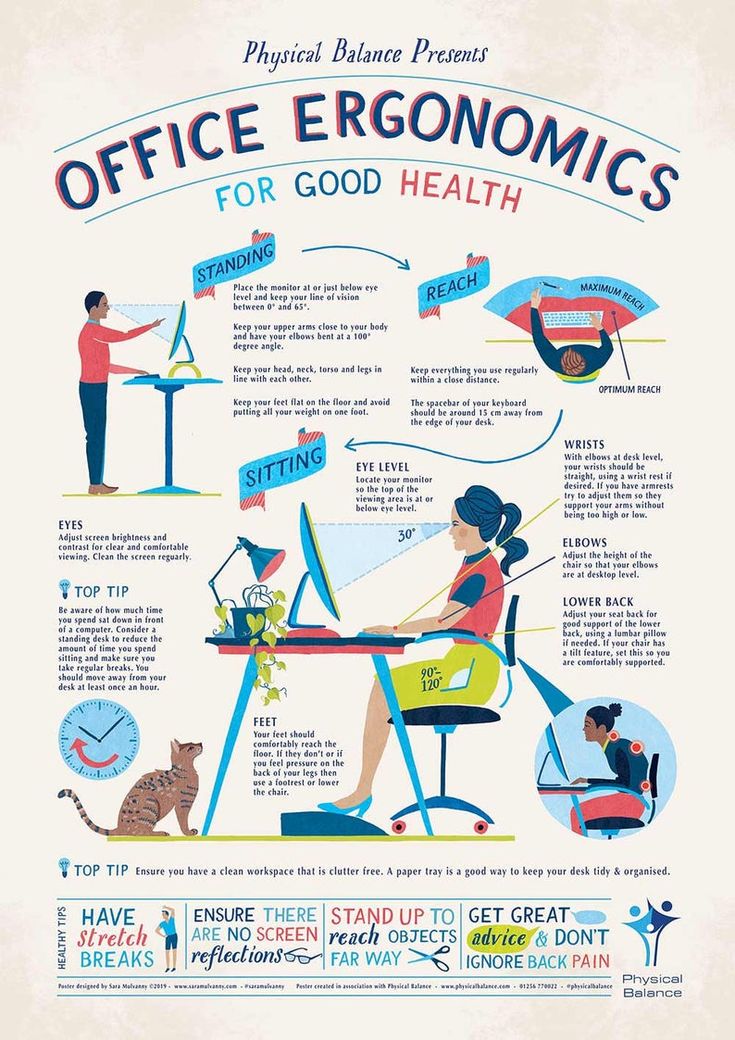 You won't be able to throw up your hands victoriously and shout "found!" after rummaging through the entire table in search of the desired document. Do not enjoy spring cleaning when you throw out a few boxes of trash, and colleagues clearly see that you really tidied up. Sitting at your workplace, you are unlikely to find a pack of cookies that you forgot under a pile of papers a week ago. And now you can’t tell anyone that “this is a creative mess”, because you can’t call order creative.
You won't be able to throw up your hands victoriously and shout "found!" after rummaging through the entire table in search of the desired document. Do not enjoy spring cleaning when you throw out a few boxes of trash, and colleagues clearly see that you really tidied up. Sitting at your workplace, you are unlikely to find a pack of cookies that you forgot under a pile of papers a week ago. And now you can’t tell anyone that “this is a creative mess”, because you can’t call order creative.
How to properly organize your desk
1. Trash bin at arm's length
Office basketball is not fun to play like that, but you can throw away unnecessary paper, wrapping or broken pencil, just by stretching out your hand. Without the risk of missing the trash can or hoarding rubbish on the table until it takes up all the space. But do not put the trash can in the most visible place, better under the table or in the corner.
2. Keep essentials on the table
Imagine that a table is a very expensive land in the center of Moscow, and only irreplaceable things deserve to be on the surface.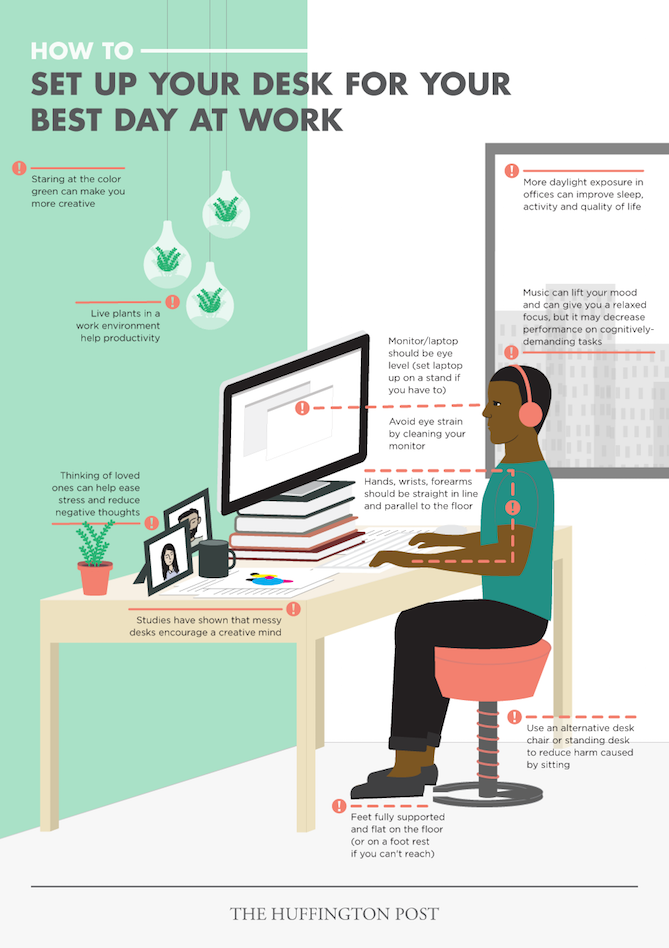 The most needed ones are at hand, the ones needed during the day are on the table. Put the rest in a desk drawer, rarely used - in a box under the table. Rank things according to demand, and there will be much less of them on the table. At the same time, do not go too far, putting everything away - the necessary things should be within reach, otherwise you will constantly search through all the shelves and boxes in search of a "suddenly" needed stapler.
The most needed ones are at hand, the ones needed during the day are on the table. Put the rest in a desk drawer, rarely used - in a box under the table. Rank things according to demand, and there will be much less of them on the table. At the same time, do not go too far, putting everything away - the necessary things should be within reach, otherwise you will constantly search through all the shelves and boxes in search of a "suddenly" needed stapler.
3. Think about storage
Use desk drawers, shelves (if available), boxes, coasters, and other surfaces and containers that help organize your workspace.
4. Create a catalog for papers
If you constantly deal with papers, sort them and store them in a "catalog". You can sort by name, date, significance, or other important parameters that allow you to quickly identify the file. Of course, you will have to tinker with creating such a catalog, but then you, like a real librarian, will find the necessary papers in a few seconds.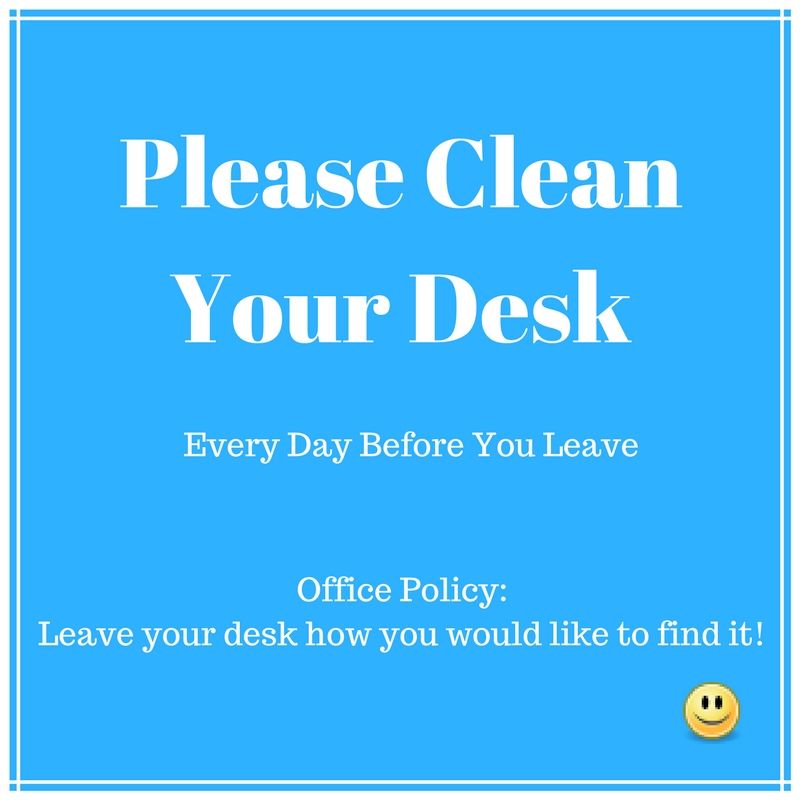
5. Paper "purgatory"
Create a stack of "incoming files" for new documents that you don't have time to sort yet. The stack should be limited in the number of files, otherwise you run the risk of accumulating paper, constantly postponing viewing for later.
6. Number
Transfer all notes to your smartphone or computer and discard notes stuck to your monitor, wall or table. Digital notes are not so bright and do not “irritate the eyes” all day long, but you can set a notification when you need to return to this task.
7. Cleaning ritual
Get into the good habit of tidying up your table at a certain time. For example, on "Clean Thursday" before leaving home. Or on Friday, if you are sure that you can stay 10 minutes late at the end of the working week. Throw out the trash, extra papers, disassemble the table surface and drawers, check the space under the table. If you do this on a regular basis, you can even do it in 5 minutes.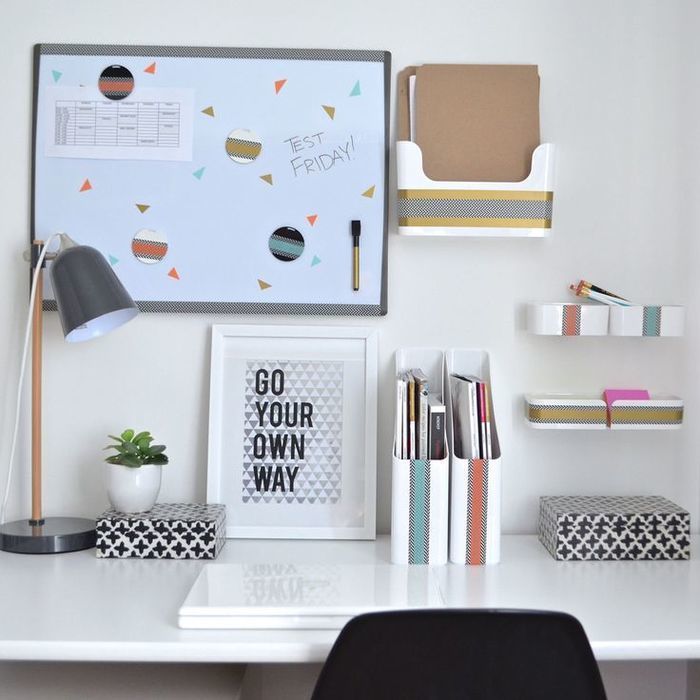
Use these simple tips and you'll be fine.
Order on the table - order in the head. How to organize a workplace
Business hack
Order on the table - order in the head. How to organize a workplace
November 6, 2020 24 895 views
Olesya Akhmedzhanova
The workplace affects our productivity. When we are comfortable, light and cozy, then we do more, get tired less and give out on a brilliant idea per hour. Catch tips on how to arrange your desk and everything around it - in the office and at home.
Table
The table is a “hot spot” where rubbish tends to accumulate. Put a box for things there: when it is full, put everything in its place. And what should be here, keep as convenient as possible: pencils and pens in mugs or wooden containers, papers in folders.
Violators of the order
Periodically audit: remove unnecessary things. Take a closer look at your table right now and find the "violators" of the order.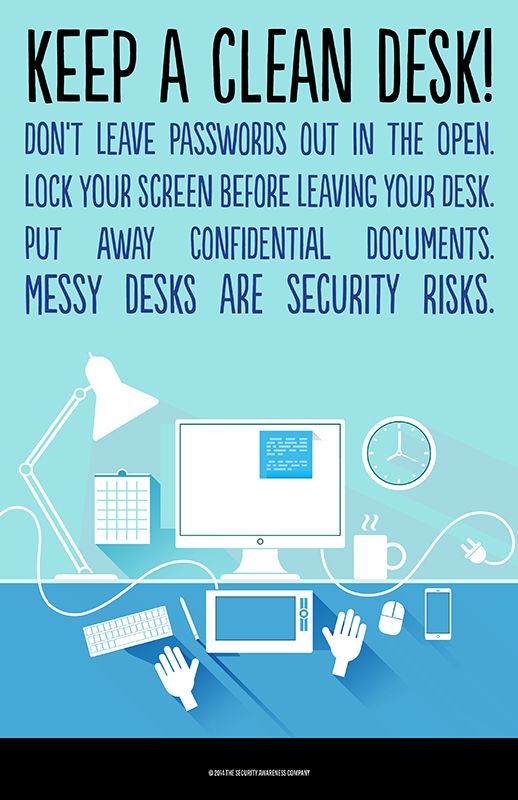
— Extra papers
- Empty envelopes and folders from them
- Unnecessary computer equipment, unsuitable wires and other electronic antiques
- Extra pencils, pens and scissors
Papers As soon as the document is in your hands, put it in the designated place, perform the necessary actions (for example, pay the bill), or throw it away. And again: unnecessary waste paper is gone!
You can store paper in these boxes. Source
Remodelista
Light
City Psychology
Light is a source of cheerfulness. Natural light enhances cognition because the sleep-wake cycle (circadian rhythm) works better. The importance of natural lighting has already been recognized by many companies. For example, the designers of the Facebook office in Menlo Park thought about the location of the windows so that every workplace is lit by natural light.
This is what the Facebook office in Menlo Park looks like. Source
Source
Yes, ideally have your desk by the window. But if this is not possible, the "correct" lamps will do. If you want to create a cozy lighting, choose a reddish-yellow light (this is suitable for a relaxation area). Cool bluish light is suitable for the office.
Gamma
To reduce clutter, opt for a monochrome palette. Small items will also look more organized if their color range is limited. White color is unbeatable: it gives the effect of simplicity and purity and makes the space less crowded.
White is order. Source
Accents
Add a color accent to your desktop so you can quickly find what you frequently access. Choose eye-catching and soothing colors: for example, a blue or green organizer works great.
Storage
Organize everything so that the workplace is neat and functional.
- Keep things on the shelves so they don't clutter up the space. You can take a perforated board and install shelves on it.
Perforated panel helps organize storage anywhere. Source
- Place documents in metal boxes or use a special stand.
Document holder
— For pencils and pens, use mugs, ceramic vases, or containers made from natural materials such as wood or stone.
Source
- Cutlery dividers from the kitchen or a wire drawer organizer will help to clean up the desk drawers.
Organizer wire drawer - a great solution for a cluttered desk drawer
- A paper basket is suitable for waste paper.
Eco-friendly paper basket
Decor
When things are in their place, beauty can be added. The workplace should be not only comfortable, but also inspiring.
The workplace should inspire and delight. Source
Put a few photographs on the table: they will help to distract and restore strength in moments of calm. You can add a vase of flowers, a houseplant, or a few paintings to let your mind wander randomly in search of solutions to difficult problems.

